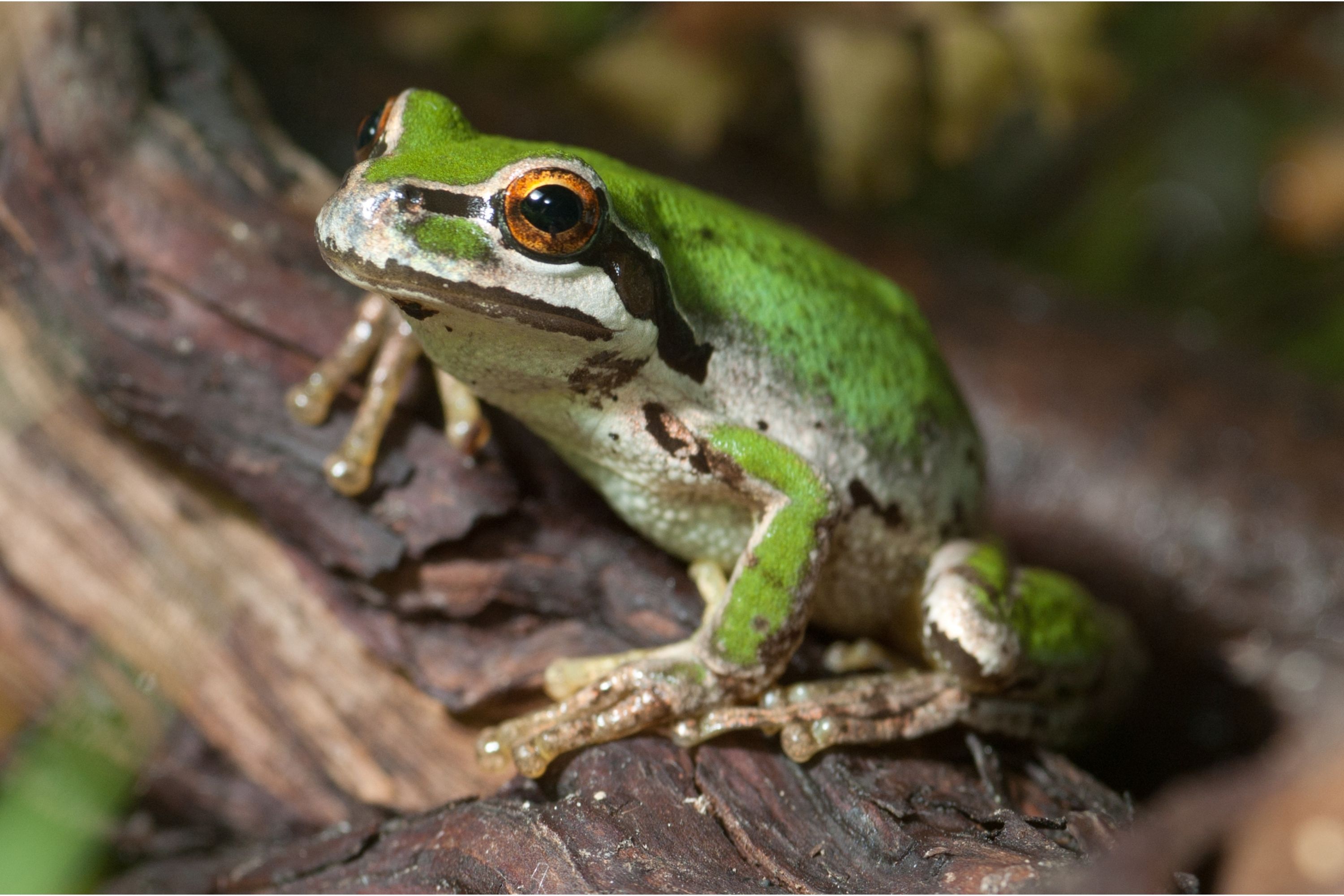Pacific tree frog
(Pseudacris regilla)

Description
The Pacific tree frog (Pseudacris regilla), also known as the Pacific chorus frog, has a range spanning the Pacific Northwest, from Northern California, Oregon, and Washington to British Columbia in Canada and extreme southern Alaska. They live from sea level to more than 10,000 feet in many types of habitats, reproducing in aquatic settings. They occur in shades of greens or browns and can change colors over periods of hours and weeks. The taxonomy of this frog has a very confusing history. First, the frog was moved from the genus Hyla to the genus Pseudacris in 1986, and Hyliola in 2016 (an elevation of the subgenus which has not been widely accepted). In 2006, Recuero et al. split the frog into three species based on DNA evidence. Recuero et al. used incorrect names for two of the three populations, but subsequent authors established that the correct name (i.e., the oldest available name) for the northern component is Pseudacris regilla, for the central one Pseudacris sierra, and for the southern one Pseudacris hypochondriaca. This revision has been controversial but the evidence is supported by other research (e.g.), and is followed in this article. Pacific tree frogs are common on the Pacific coast of Oregon and Washington, but they are found from extreme northern California to British Columbia. They can also be found in Idaho. A small population also exists in a pond on Revillagigedo Island near Ketchikan, Alaska, having been intentionally introduced there in the 1960s. They are found upland in ponds, streams, lakes and sometimes even further away from water; their habitat includes a wide variety of climate and vegetation from sea level to high altitudes. The Pacific tree frog makes its home in riparian habitat, as well as woodlands, grassland, chaparral, pasture land, and even urban areas including back yard ponds. Eggs of the Pacific tree frog may be consumed by the rough-skinned newt and other amphibians. These frogs (if one includes the two very closely related species, as discussed above) are the most common frogs on the West Coast of North America. Although Pacific tree frogs remain abundant, some other species found in the same areas, such as California red-legged frogs, are declining. Most populations of tree frogs appear healthy, and they have no concern or conservation status.
Taxonomic tree:







